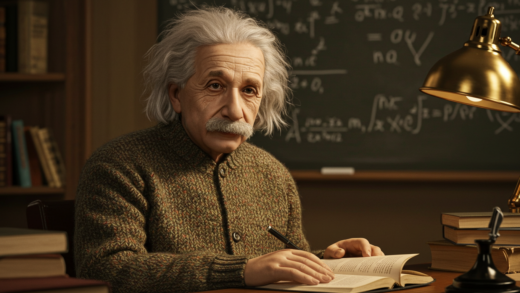Alan Turing’s Contributions to the Scientific World
Alan Turing, a name synonymous with computer science, made groundbreaking contributions that extend far beyond the digital realm. His impact resonates deeply within mathematics, cryptography, and artificial intelligence, shaping the very fabric of modern technology. This exploration delves into the multifaceted genius of Alan Turing, examining his pivotal role in the development of theoretical computer science, codebreaking during World War II, and his visionary ideas on artificial intelligence, which continue to inspire researchers today. His legacy is not merely historical; it remains a cornerstone of contemporary scientific advancement.
The Foundation of Theoretical Computer Science
Alan Turing’s seminal work, published in 1936, introduced the concept of the Turing machine, a theoretical model of computation. This abstract machine, consisting of a tape, a head, and a set of rules, laid the groundwork for the modern understanding of algorithms and computation. The Turing machine, despite its simplicity, proved capable of performing any computation that can be performed by a modern digital computer. This theoretical framework provided a formal definition of what it means to be “computable,” thereby establishing the fundamental limits of computation and shaping the field of theoretical computer science for decades to come. His work provided a rigorous mathematical foundation upon which the entire field of computer science is built, making it one of the most crucial achievements in the history of mathematics and computation.
In essence, Turing’s Turing machine provided a universally applicable model for computation. This simple yet powerful conceptualization allowed for the standardization of understanding algorithmic processes, paving the way for the development of actual computers. His work not only provided the theoretical basis for computer design but also addressed fundamental questions regarding the capabilities and limitations of computation itself. This established a formal language for discussing algorithms and their capabilities, fundamentally altering how we approach problem-solving using computational methods. Turing Machine is now a cornerstone concept in computer science education and research.
Codebreaking at Bletchley Park
During World War II, Alan Turing played a crucial role at Bletchley Park, the British codebreaking center. He designed and built the Bombe, an electromechanical machine used to decipher the German Enigma code. The Enigma machine was considered unbreakable, but Turing’s innovative approach, which combined mathematical analysis with engineering ingenuity, allowed the Allies to intercept and decrypt vital German military communications. This timely intelligence significantly shortened the war and is estimated to have saved countless lives. His work at Bletchley Park remains a testament to his analytical brilliance and its significant impact on the outcome of World War II.
Turing’s contribution to breaking the Enigma code was invaluable to the Allied war effort. His ingenuity in designing the Bombe, a machine that systematically tested possible Enigma settings, revolutionized codebreaking. The intelligence obtained from decrypted messages provided crucial insights into German military strategies, allowing the Allies to anticipate and counter enemy movements. This ultimately accelerated the end of the war and profoundly impacted the course of history. His work highlights not only his mathematical prowess but also his ability to apply theoretical knowledge to real-world problems with significant global consequences.
The Turing Test and Artificial Intelligence
Beyond his contributions to mathematics and codebreaking, Alan Turing made significant strides in the field of artificial intelligence. He proposed the Turing Test, a method for evaluating a machine’s ability to exhibit intelligent behavior equivalent to, or indistinguishable from, that of a human. This test, though debated and refined over the years, remains a significant benchmark in AI research, pushing the boundaries of what we consider machine intelligence. The Turing Test continues to serve as a crucial framework for evaluating progress in the development of artificial intelligence.
The Turing Test, proposed in Turing’s seminal 1950 paper “Computing Machinery and Intelligence,” sparked a lively debate about the nature of intelligence and consciousness. The test’s focus on observable behavior, rather than internal processes, shifted the focus of AI research towards creating machines that could convincingly mimic human interactions. Its enduring influence is evident in the ongoing efforts to create increasingly sophisticated AI systems capable of natural language processing, problem-solving, and even creative endeavors. The test continues to shape both the goals and evaluation metrics within the field of AI research.
Turing’s Mathematical Contributions Beyond Computation
While renowned for his contributions to computer science, Alan Turing’s mathematical contributions extend far beyond the realm of computation. His work on morphogenesis, the study of pattern formation in biological systems, utilized mathematical models to explain how complex biological structures emerge from simple interactions. These models, though developed decades ago, continue to inspire research in developmental biology and other fields where pattern formation is a crucial element. This demonstrates his ability to apply rigorous mathematical thinking to diverse and seemingly unrelated scientific challenges.
Turing’s exploration of morphogenesis, detailed in his 1952 paper “The Chemical Basis of Morphogenesis,” offered a novel approach to understanding biological processes. He demonstrated how seemingly simple chemical reactions, governed by diffusion and reaction-diffusion equations, could generate intricate patterns observed in nature. This groundbreaking work established a foundation for mathematical modeling in developmental biology, opening new avenues for investigating the mechanisms that shape living organisms and continue to inspire research on pattern formation in various systems. His contributions transcend the boundaries of his time.
The Impact of Turing’s Legacy on Modern Computing
The influence of Alan Turing’s work on modern computing is undeniable. From the fundamental architecture of computers to the algorithms that drive them, his theoretical contributions laid the groundwork for the digital age. The development of programming languages, operating systems, and even the design of modern computer hardware all owe a debt to Turing’s visionary insights and groundbreaking mathematical models. His work continues to shape the development of new technologies and the expansion of computational capabilities.
Turing’s legacy extends beyond specific technologies; it shapes the very way we think about computation. His work provides a theoretical framework that underpins the entire field of computer science, influencing the design of algorithms, the development of programming paradigms, and even our understanding of the fundamental limits of computation. His ideas continue to inspire innovation in areas like artificial intelligence, machine learning, and quantum computing, driving progress in fields that were unimaginable during his lifetime.
Alan Turing: A Visionary Ahead of His Time
Alan Turing’s intellectual contributions were not only significant for their time but also remarkably prescient. His insights into the potential of computers to mimic human intelligence, his theoretical framework for computation, and his contributions to cryptography have profoundly shaped the course of scientific and technological advancement. His work is a testament to the power of abstract thought and its ability to transform the world. His work also serves as a stark reminder of the potential for both immense progress and deep societal injustices.
Turing’s foresight regarding the transformative power of computing is evident in his work across diverse fields. His work on artificial intelligence remains highly relevant today, as researchers continue to strive towards creating truly intelligent machines. His contributions to theoretical computer science established a foundation upon which many other innovations are built. The breadth and depth of his work continue to provide inspiration for scientists and engineers across numerous disciplines. His lasting legacy is a testament to his unique vision and contributions.
The Ethical Considerations of Turing’s Work
While Turing’s work has advanced scientific and technological progress, it also raises crucial ethical considerations. His contributions to codebreaking highlight the ethical complexities of surveillance and the use of technology in warfare. Similarly, advancements in artificial intelligence, inspired by his work, raise questions about job displacement, algorithmic bias, and the potential for autonomous weapons systems. These concerns necessitate a careful examination of the societal implications of technological advancements.
The ethical considerations surrounding Turing’s contributions are multifaceted and demand ongoing dialogue. His work in codebreaking raises issues of privacy and the balance between national security and individual rights. Similarly, his contributions to AI necessitate careful consideration of potential biases in algorithms and the ethical implications of increasingly autonomous systems. Addressing these ethical challenges is crucial to ensure that technological progress benefits all of humanity.
The Enduring Legacy of Alan Turing
Alan Turing’s legacy extends far beyond his individual accomplishments. He represents a model of scientific curiosity, innovative thinking, and relentless pursuit of knowledge. His influence on modern computing, artificial intelligence, and cryptography remains profound and ever-expanding. His story serves as a powerful reminder of the transformative potential of human ingenuity and the importance of supporting scientific inquiry and protecting the rights of individuals.
His impact continues to resonate across multiple disciplines, shaping our understanding of computation, intelligence, and the very nature of reality. The celebration of his life and work not only honors his significant achievements but also serves as an inspiration for future generations of scientists and engineers to tackle the grand challenges of our time. The enduring power of his contributions ensures that his name will remain firmly etched in the annals of scientific history.
Frequently Asked Questions
What was Alan Turing’s most significant contribution?
While it’s difficult to pinpoint one single “most significant” contribution, his conceptualization of the Turing machine is arguably his most foundational work. This theoretical model of computation formed the basis of modern computer science, defining what is computable and influencing almost every aspect of computer design and programming.
How did Alan Turing contribute to World War II?
At Bletchley Park, Turing played a vital role in breaking the German Enigma code. His design and development of the Bombe machine, an electromechanical device used to decrypt Enigma messages, provided the Allies with crucial intelligence, significantly impacting the outcome of the war.
What is the Turing Test?
The Turing Test is a method of evaluating a machine’s ability to exhibit intelligent behavior equivalent to, or indistinguishable from, that of a human. It assesses a machine’s capacity to engage in conversation in a way that a human judge cannot distinguish from a human response.
What is morphogenesis, and how did Turing contribute to this field?
Morphogenesis is the study of biological pattern formation. Turing’s mathematical models described how simple chemical reactions and diffusion could create complex patterns, offering a new understanding of how biological structures develop.
What ethical concerns are associated with Turing’s work?
His work on codebreaking raises concerns about surveillance and privacy, while his contributions to AI raise questions about job displacement, algorithmic bias, and the potential for autonomous weapons. These ethical concerns require ongoing discussion and careful consideration.
What is the lasting legacy of Alan Turing?
Turing’s legacy is a multifaceted one, encompassing his foundational contributions to computer science, his pivotal role in World War II, his groundbreaking work in artificial intelligence, and the enduring ethical questions raised by his innovations. His work continues to inspire researchers and shape technological advancements.

